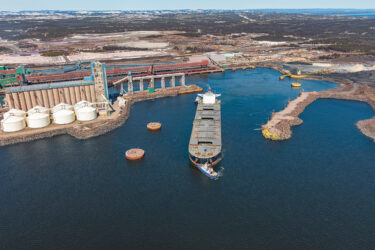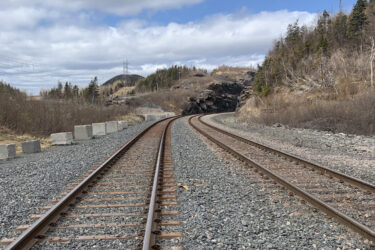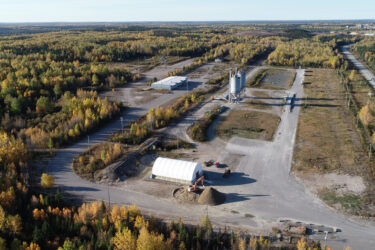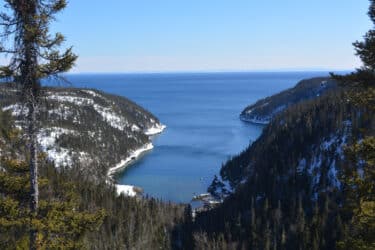The Simandou Project is located in eastern Guinea and consists of the development one of the world’s largest hematite iron ore deposits with resources in excess of 2.7 billion tonnes.
There has been an interest in developing the ore body since at least the early 1990’s. Rio Tinto (RT) became interested in 1997 and acquired their rights to the concession in 2006. Considerable funds have been invested in exploration to prove project resources and studies of the infrastructure requirements not only at the mine but also for the rail and port facilities required to get the ore seaborne.
The biggest challenge to project is the infrastructure including the approximate 650 km distance between the future mine and port location, probably near the mouth of Morebaya River. The proposed rail corridor imposes a CAPEX that requires high levels of production to meet payback objectives. In the past, the Project contemplated integrating OPEX-reducing rail technologies that RT developed for its Pilbara assets in Australia and design criteria that could further increase CAPEX.
SYSTRA Canada’s mandate includes:
- Identifying potential operators to determine operating expectations and better ensure the long-term viability of the operation of the system;
- Defining contractual operating risk sharing/allocation scenarios including in a potentially multi-user environment;
- Determining the interest of potential railway operators for equity contribution to the project (cash, other).
More specifically, SYSTRA Canada completed the following activities:
- Summary of the Railway Project and Options. From the Phase 1 assignment, review and synthesize the fundamentals of the Railway component of the Simandou Project to define specifically the key assumptions needed by the potential operating partner(s) (users, locations, alignment, distance, volumes, train consist, frequencies, cycle times, etc.).
- Review of Partnership Models and Experiences. Review of most critical lessons learned from mining railway long-term capital-operating partnerships in similar contexts with enough historic background and identification of key principles of forms of agreements such as duration, respective roles, qualities and commitments of stakeholders in terms of project financing, infra/rolling stock ownership and maintenance and railway operations, success factors, risk management and mitigation, etc.
- Review of Simandou Project Previous Business Models. Analysis of costs, business/financing organizations, tariff structure and financial pro forma that were studied previously for the Simandou Project to identify issues that may rise in defining partnership structure and searching for operating partners.
- Economic-Contractual Guidelines/Scenarios. Define the expected specific roles of the different stakeholders (users, operator, etc.) within a contractual partnership as for project capital financing, infrastructure ownership, maintenance of way, locomotive and wagon provider, locomotive and wagon maintenance, railway operations, cost sharing or tariff structure, risk and responsibility provisions, etc. From the different combinations of role allocations for each item recommend the most suitable contractual scenarios, including Key Performance Indicators (technical, organizational, economic, HSE, others).
- Definition of the Partner’s Role and Required Qualities. Suggest the key drivers in the selection of an operating partner, including similar experience, financial stability, experience with Chinese rail design, West Africa, commitment level, etc. Will require validation of these ‘must have’ by RT.
- Identification of Potential Partners. Draw a raw list of railway operators from previous experiences and projects, screen the list by a high-level assessment, retaining (upon agreement with RT) those who seem to better fit to the partnership requirements and exclude those who seem not to meet the minimal requirements. Identification of contact official for each operator to be interviewed.
- Development of Information Package and Questionnaire. Using existing information, prepare the documents to be sent to rail operating firms to be surveyed, including the questionnaire focusing on enablers and barriers to the participation to the project. To be validated by RT before issuance.
- Consultation/Survey. Contact persons to be surveyed. Get RT-compliant nondisclosure agreement executed by targeted potential operators. Send information package and questionnaire and follow-up the responses with contact officials. Conduct interviews (virtual or in person when reasonably feasible) with RT representatives.
- Survey Results. Complete data sheets for each surveyed operator and fill in the database. Highlight the key elements making the relevance and interest of the different potential operating partner that might be involved in a partnership in the Simandou Project (enablers and barriers).
- Recommendations and Report. Draw main recommendations related to operating partnership structure options and potential operating partners. Prepare a short report that summarizes findings with technical appendices.
 Extension of Able Siding
Extension of Able Siding
 Studies for “Kami” Expansion (Pointe-Noire)
Studies for “Kami” Expansion (Pointe-Noire)
 TRANSSHIPMENT YARD IMPROVEMENTS – MATAGAMI
TRANSSHIPMENT YARD IMPROVEMENTS – MATAGAMI
 Feasibility Study for Baffinland Mary River’s Mining Operation Railway
Feasibility Study for Baffinland Mary River’s Mining Operation Railway
 La Grande Alliance Feasibility Study Phase 1: Transportation Infrastructure
La Grande Alliance Feasibility Study Phase 1: Transportation Infrastructure
 Technical and Economical Feasibility Study for QC Rail
Technical and Economical Feasibility Study for QC Rail
 Australia
Australia  Brazil
Brazil  China
China  Denmark
Denmark  France
France  India
India  Indonesia
Indonesia  Ireland
Ireland  Italy
Italy  Malaysia
Malaysia  New Zealand
New Zealand  Norway
Norway  Poland
Poland  Saudi Arabia
Saudi Arabia  Singapore
Singapore  South Korea
South Korea  Sweden
Sweden  Thailand
Thailand  United Kingdom
United Kingdom  United States
United States  Taiwan
Taiwan  Vietnam
Vietnam